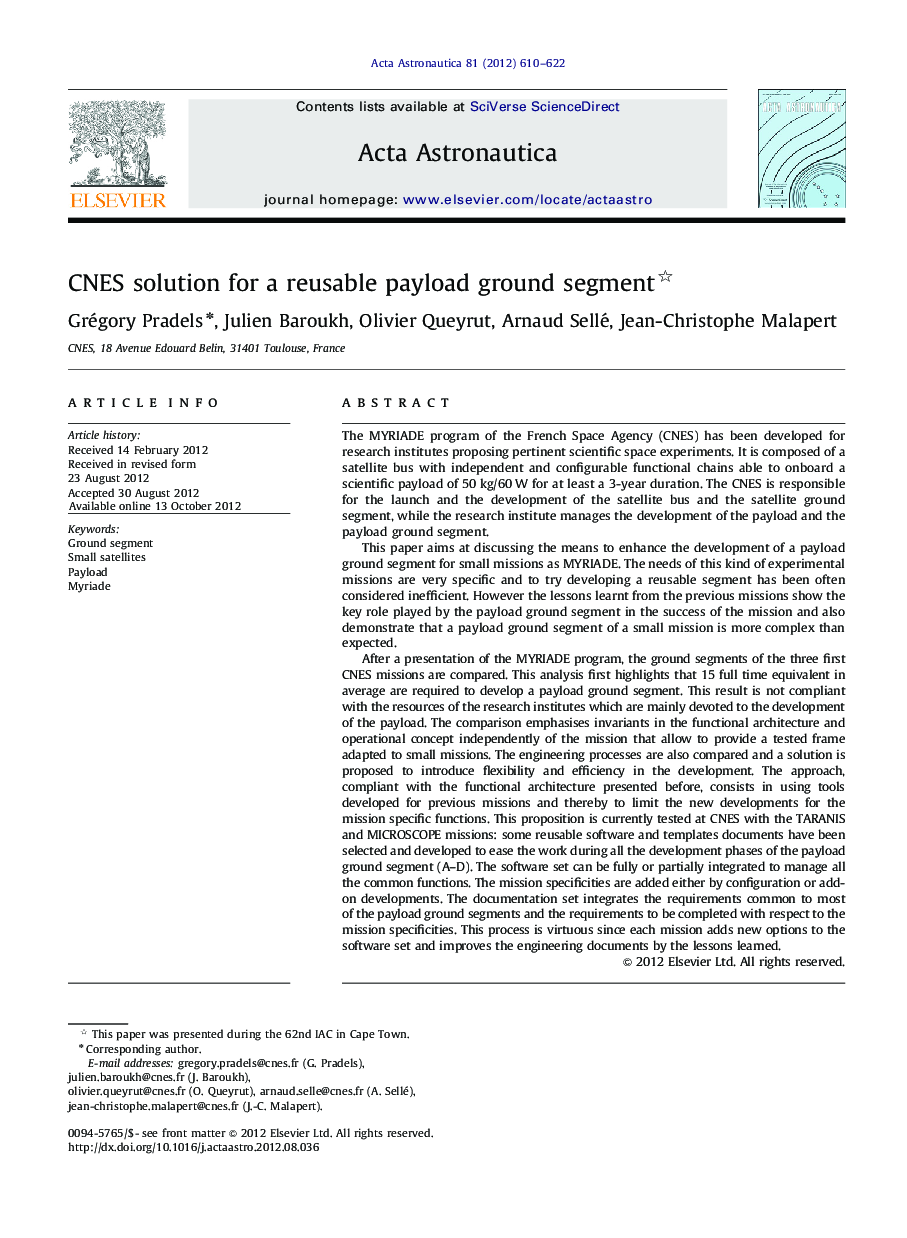| Article ID | Journal | Published Year | Pages | File Type |
|---|---|---|---|---|
| 1715075 | Acta Astronautica | 2012 | 13 Pages |
The MYRIADE program of the French Space Agency (CNES) has been developed for research institutes proposing pertinent scientific space experiments. It is composed of a satellite bus with independent and configurable functional chains able to onboard a scientific payload of 50 kg/60 W for at least a 3-year duration. The CNES is responsible for the launch and the development of the satellite bus and the satellite ground segment, while the research institute manages the development of the payload and the payload ground segment.This paper aims at discussing the means to enhance the development of a payload ground segment for small missions as MYRIADE. The needs of this kind of experimental missions are very specific and to try developing a reusable segment has been often considered inefficient. However the lessons learnt from the previous missions show the key role played by the payload ground segment in the success of the mission and also demonstrate that a payload ground segment of a small mission is more complex than expected.After a presentation of the MYRIADE program, the ground segments of the three first CNES missions are compared. This analysis first highlights that 15 full time equivalent in average are required to develop a payload ground segment. This result is not compliant with the resources of the research institutes which are mainly devoted to the development of the payload. The comparison emphasises invariants in the functional architecture and operational concept independently of the mission that allow to provide a tested frame adapted to small missions. The engineering processes are also compared and a solution is proposed to introduce flexibility and efficiency in the development. The approach, compliant with the functional architecture presented before, consists in using tools developed for previous missions and thereby to limit the new developments for the mission specific functions. This proposition is currently tested at CNES with the TARANIS and MICROSCOPE missions: some reusable software and templates documents have been selected and developed to ease the work during all the development phases of the payload ground segment (A–D). The software set can be fully or partially integrated to manage all the common functions. The mission specificities are added either by configuration or add-on developments. The documentation set integrates the requirements common to most of the payload ground segments and the requirements to be completed with respect to the mission specificities. This process is virtuous since each mission adds new options to the software set and improves the engineering documents by the lessons learned.
► We present the CNES small satellites family (also called MYRIADE). ► We make an analysis of the current payload ground segments. ► We proposed various enhancements for the development of the next payload ground segments.► We present how these enhancements are instanced by the CNES.
